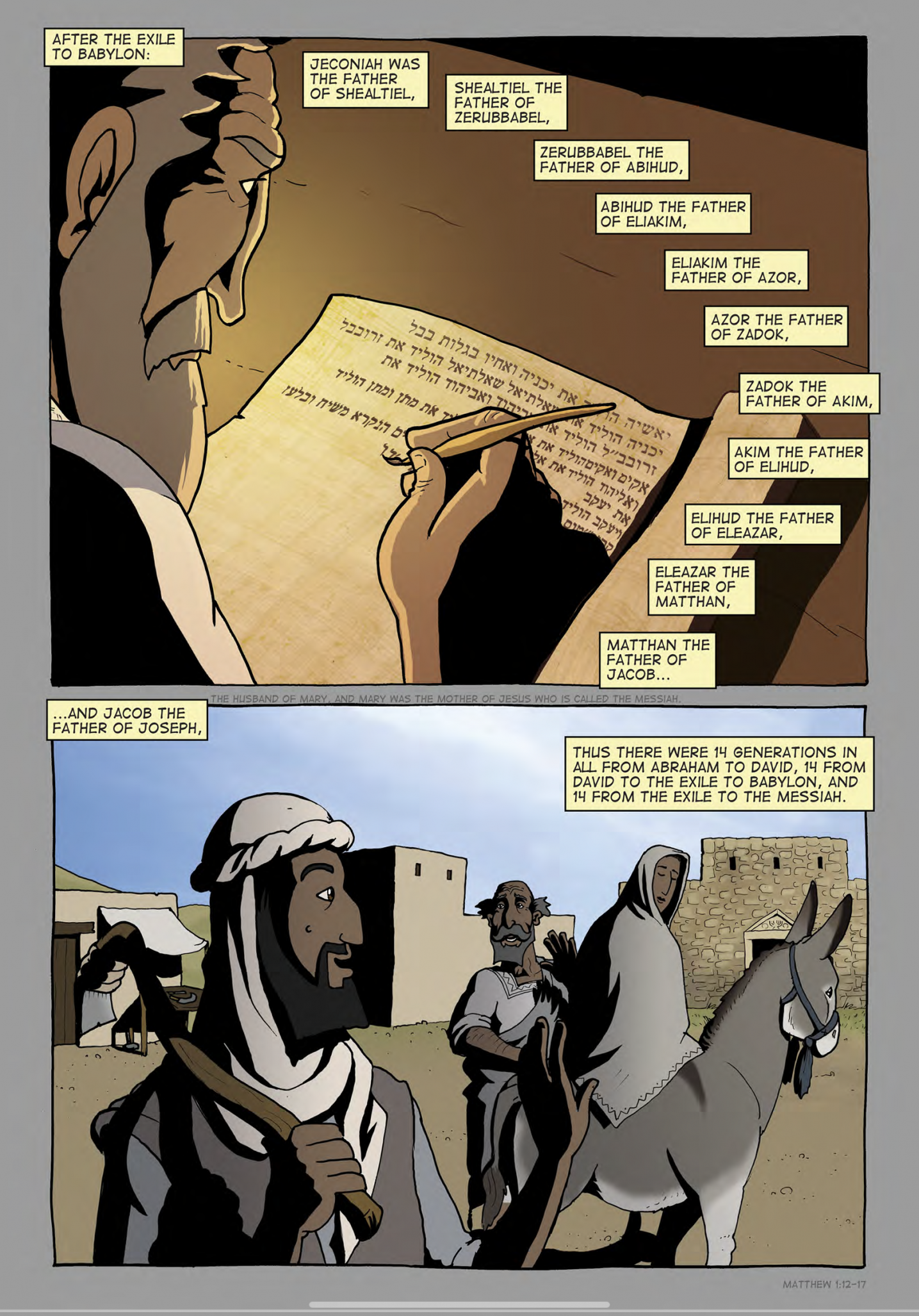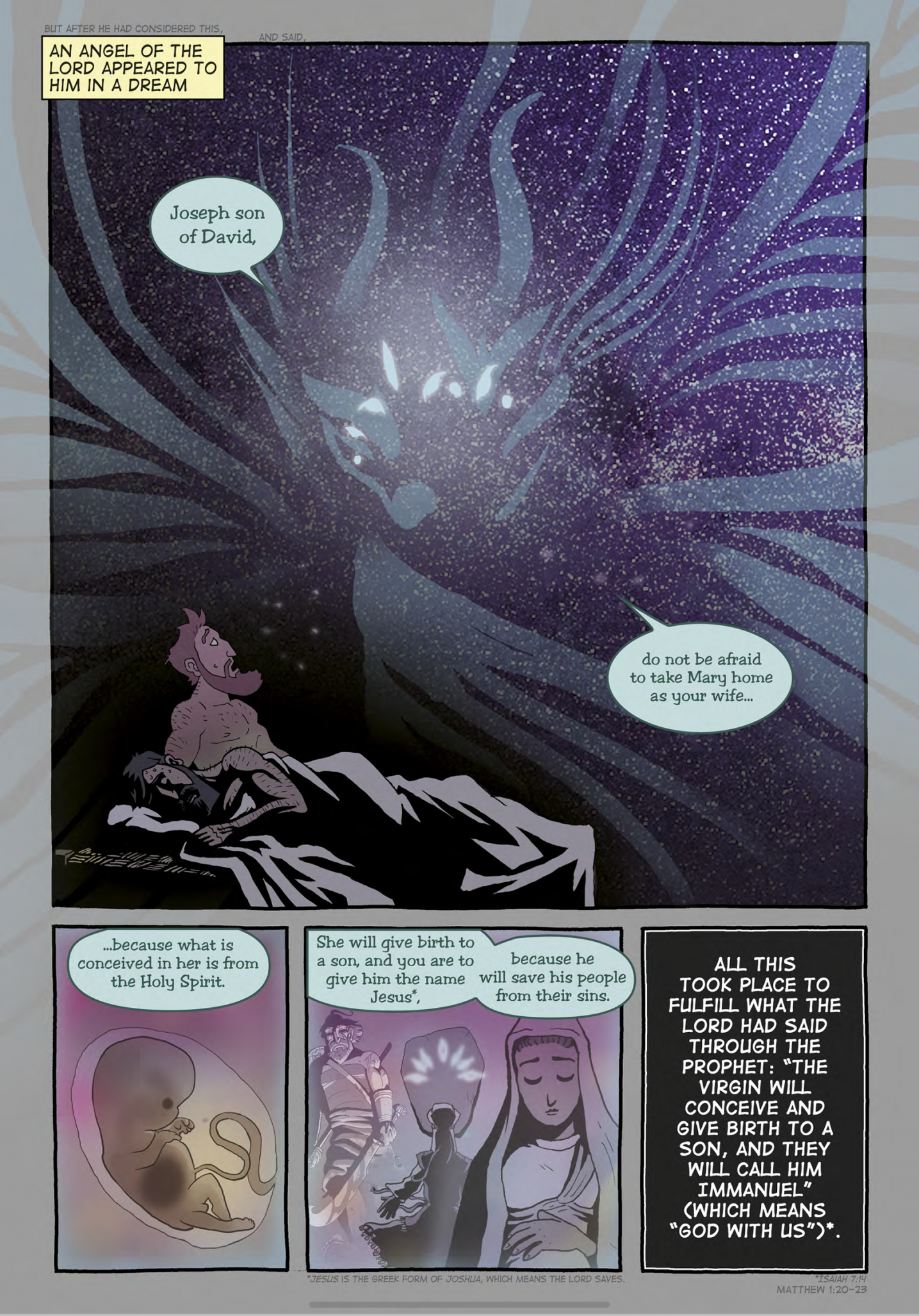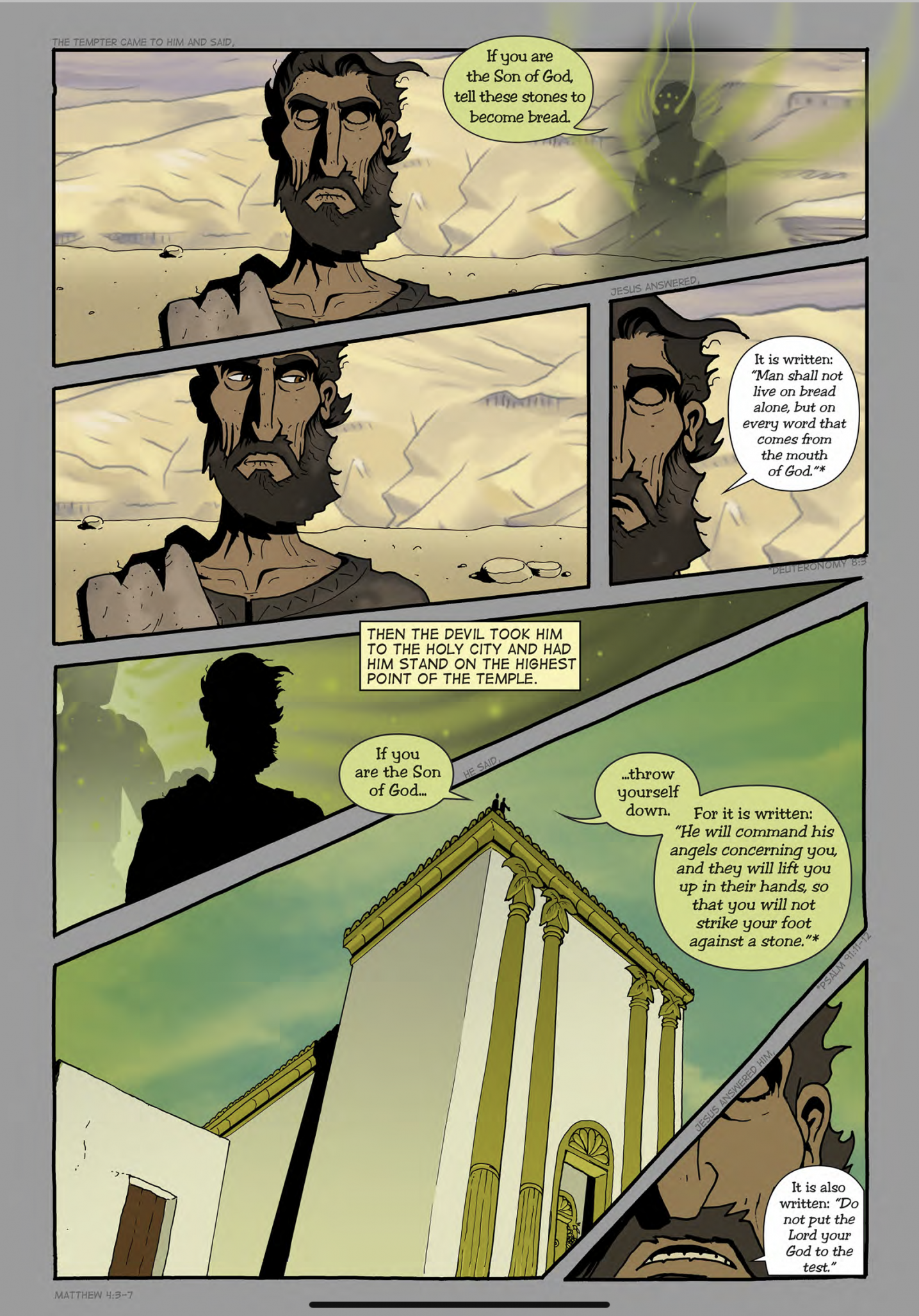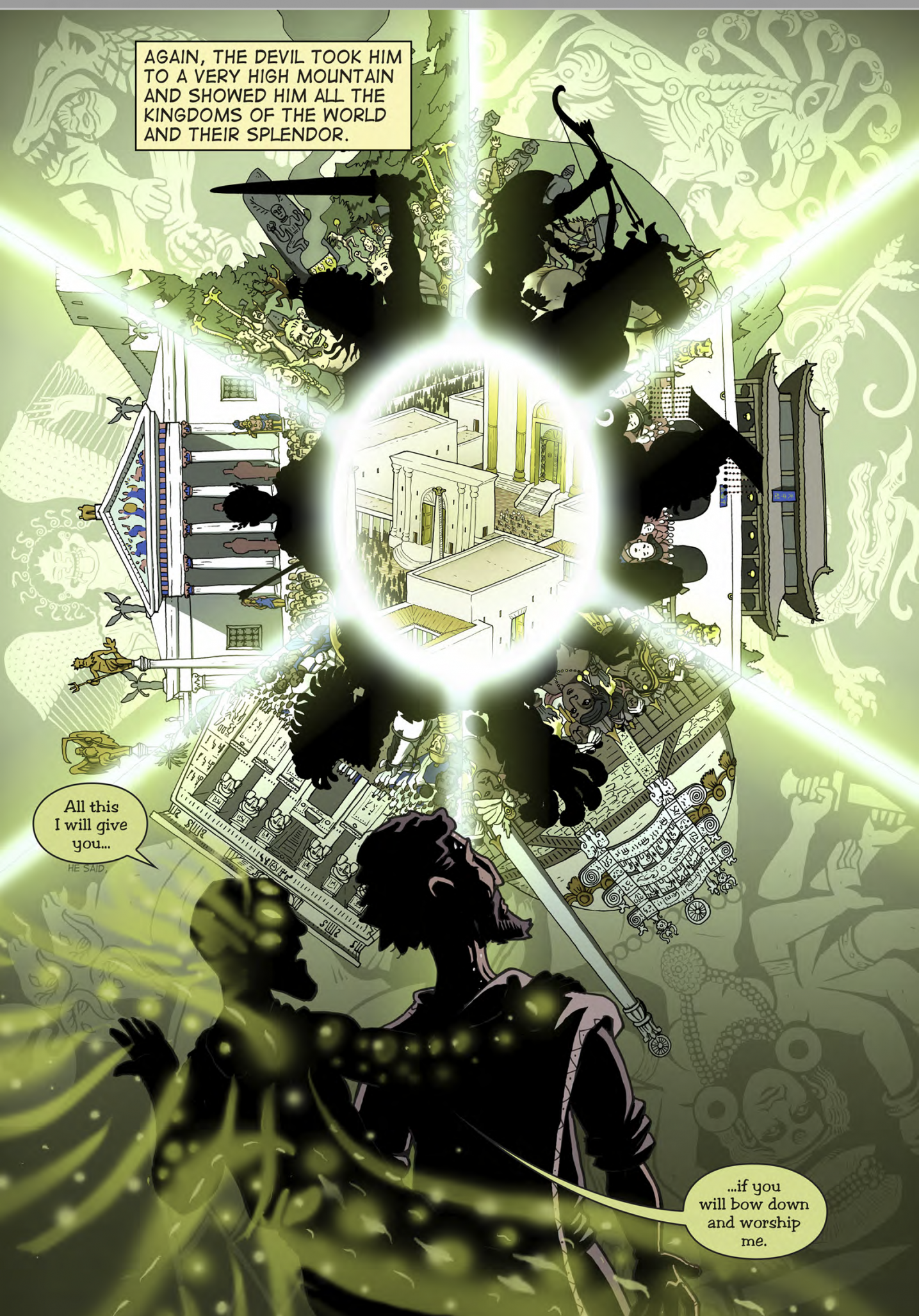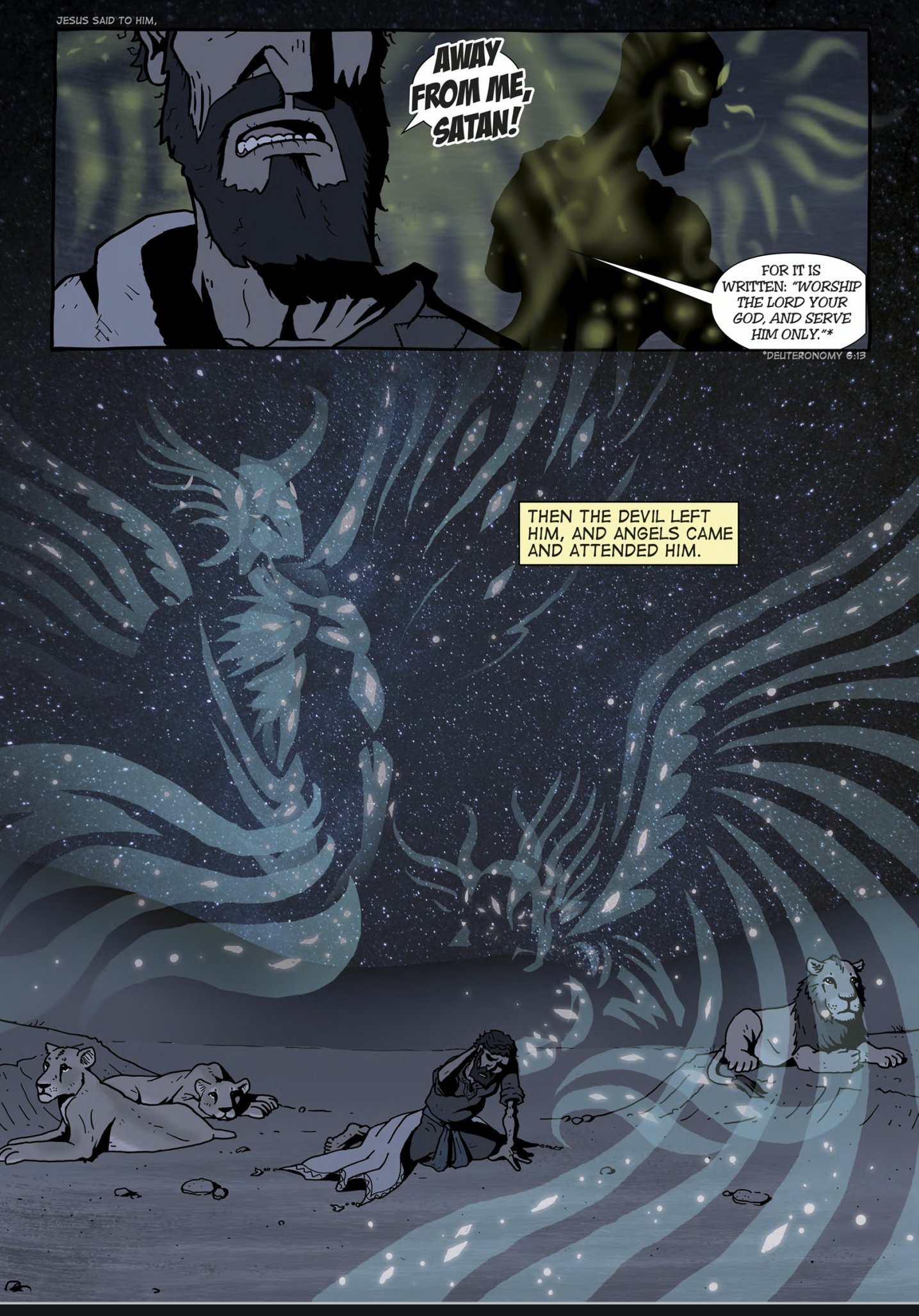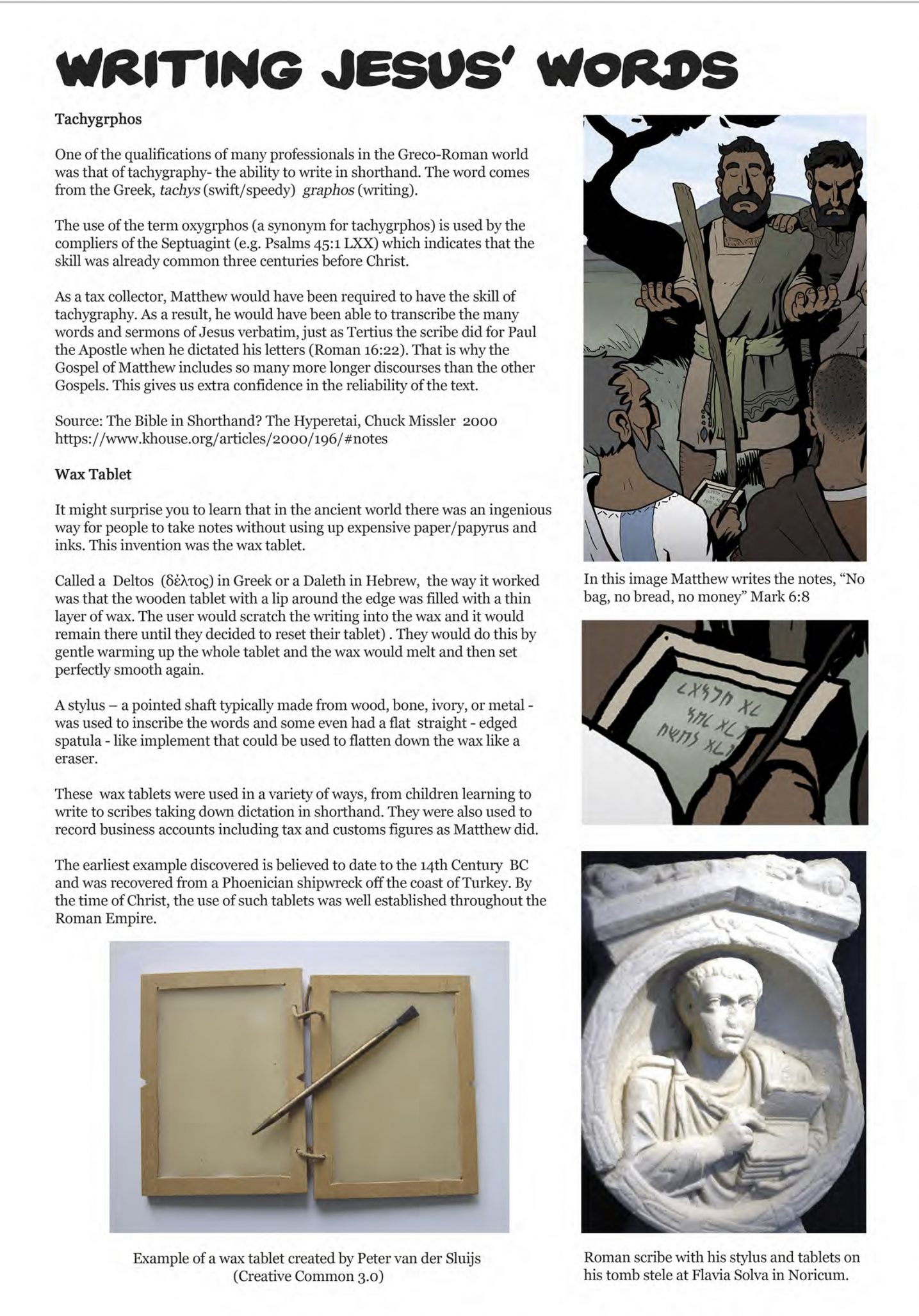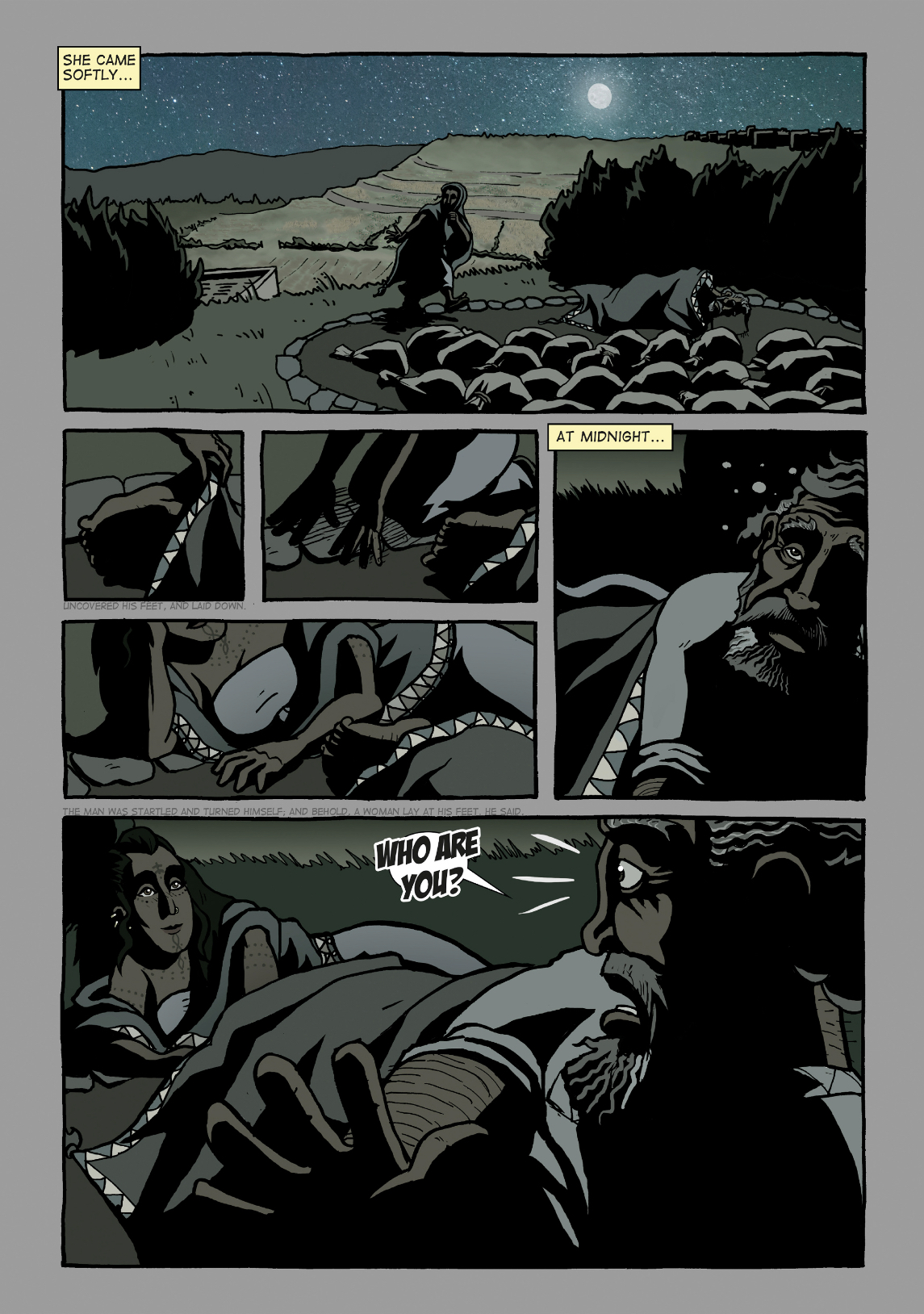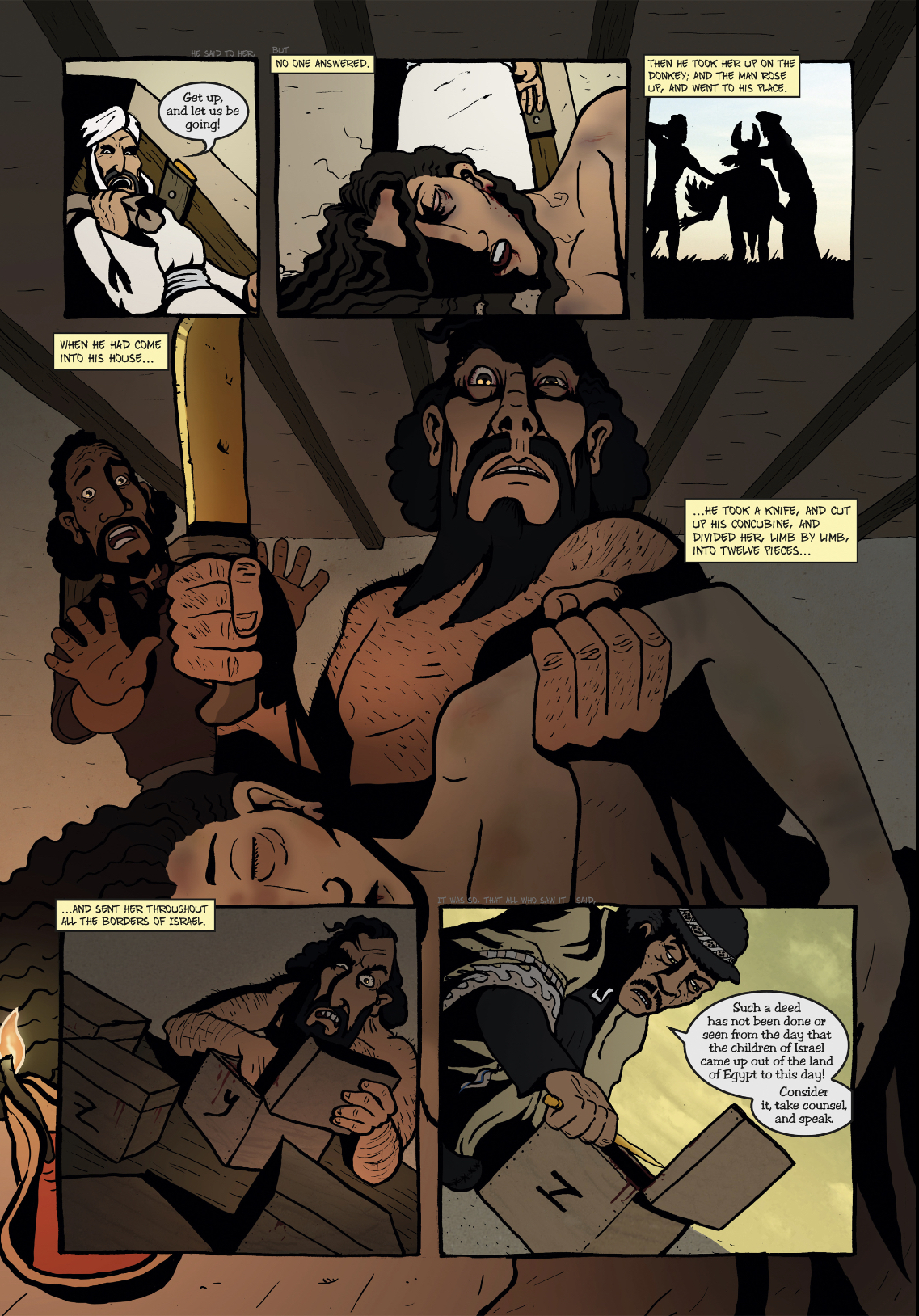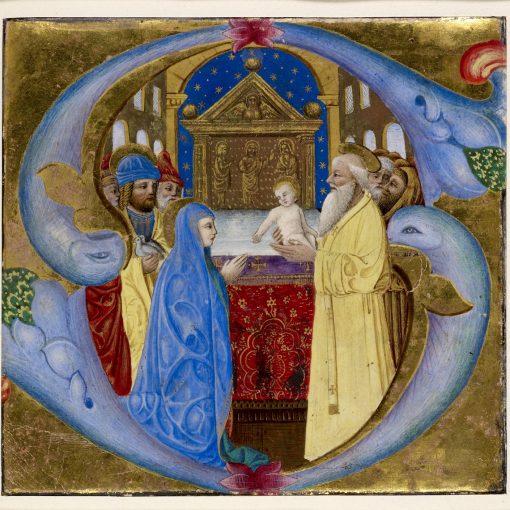As a member of the Bible Gateway “Bloggers Grid,” I was invited to review the new comic version of the Gospel of Matthew by Simon Amadeus Pillario. It was released on September 4, 2020 and you can buy it directly at the creator’s site, https://www.wordforwordbiblecomic.com/buy.
Longtime readers of this site will know that I am very fond of comics and at one time I used to post them with regularity. I read a LOT of comic strips every day, just some down time therapy, as it were, I enjoy certain series (Usagi Yojimbo, Nightwing, and anything by John Allison like Steeple [fun religious themes!] and Giant Days) and I am always interested in how the Bible is portrayed in comics. A few years ago I reviewed The Action Bible (a comic disappointment), R. Crumb’s controversial Genesis, and I quite liked a new version of the Temptations of Jesus by a priest and artist.
Pillario has been working on depicting the Bible “word for word” in comic form for quite some time and has already produced versions of Joshua, Judges, Ruth, Esther, Mark, and now Matthew. First and foremost I should say that I appreciate the effort and the execution. I highly recommend those with an interest in such graphic depictions of the Bible should support his efforts by purchasing the various books already rendered. While Matthew was provided to me for the review, I purchased copies of his rendering of Judges, Ruth, and Esther.
Regarding the art itself, well, that is always subject to personal taste and I am not an art critic. I find it flat, but engaging. His choices are sometimes curious, but Pillario always explains his decisions (see, for example, the interesting and unexpected depiction of Ruth as having facial tattoos). These decisions, however, reveal the naivety of his assertion that his version as “avoided, as far as possible, creating a new interpretation, version or re-telling of the text.”
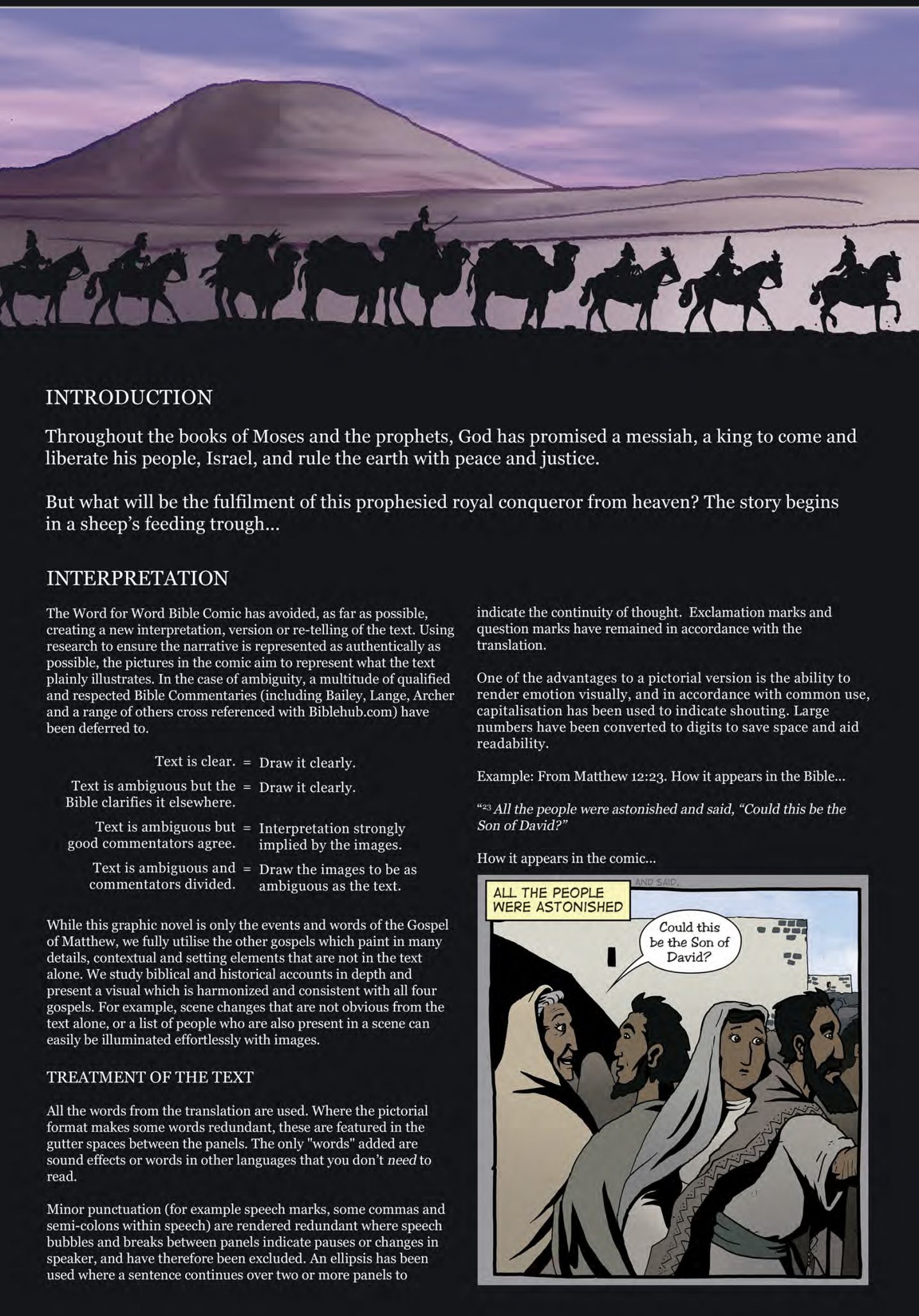
Such a goal is simply unattainable, not only because any “reading” of a text requires some interpretation, but also because rendering from one medium into another necessitates extensive interpretation and nearly endless decisions. To his credit, Pillario does his best to layout his assumptions and process of determining how to “represent what the text plainly illustrates.” (See the image to the right.) He acknowledges that sometimes the text is simply ambiguous and so his illustrations are ambiguous, this is done to good effect with respect to the appearance of angels, for example. His appeal to certain scholarship will be questioned by those of us who are within the field, but in general, you will simply find a visual rendering of the NIV that you might expect.
In spite of his opening comments about “Interpretation” (or lack thereof), Pillario not only does a very good job of interpreting and depicting in images the Gospel of Matthew, he also provides extensive commentary at the end of the work about why he made the interpretations he did. See, for example, his explanation for why he depicts “Matthew” with a wax tablet (below). I do question his presentation of languages, however. At one point he depicts a scribe writing down Hebrew, but rather than rendering it by (the artist’s own) hand (see below), it appears the artist used a “Biblical” Hebrew font. Later, such as in the scene with Matthew transcribing Jesus’ words, he draws the characters, which feels more in keeping with the “feel” of the scene and the artwork.
There is one (relatively) consistent choice Pillario makes that I found distracting and, occasionally, annoying. In the Introduction he informs us, “Where pictorial format makes some words redundant, these are featured in the gutter spaces between the panels.” In the example above, “and said,” is in the gray gutter in a slightly darker gray font. It is very hard to see. It is easy to overlook these phrases and, if they are truly redundant, he should have simply omitted them. On the other hand, if the commitment to be a “word-for-word” representation (of, it must be noted again, the translation not the original underlying text) then include them in a more graphically appealing and easier to read manner. Again, in the example above, there is no reason not to include the entire phrase “All the people were astonished, and said” in the yellow box. This sort of layout is very common in graphic novels and comics. In the end, this is largely a quibble.
My biggest critique of any of the volumes produced so far is that the artist has a faulty premise at the outset. To have an interpretation-free, graphical representation of the Bible is simply unachievable. That is hardly a failure, in my views, since I quite like and appreciate the result. Consider the depictions of angels and the Holy Spirit, for example (see below). How should one depict this? Who knows? But I think his renderings are quite striking and thought-provoking. Or again, when he is depicting Satan showing Jesus all the kingdoms of the world, the artist chose to show images from around the world and history. Nice! Of course, that required quite a bit of interpretation, but is is well done.
In fact, I praise Pillario for his commitment to represent all of the text. This is most obvious in Judges and Ruth where he does not shy away from depicting the gruesome details of Judges 19:29 (“When he had entered his house, he took a knife, and grasping his concubine he cut her into twelve pieces, limb by limb, and sent her throughout all the territory of Israel”) or Ruth “uncovering Boaz’s feet at the threshing floor. See the images in the gallery below. This can be contrasted with the “Action Bible” which creates a “harvest party” for Ruth’s encounter with Boaz, completely misrepresenting the biblical text. The result is that his versions are not “G-rated,” but neither is the Bible. Pillario is to be commended for not flinching from the task at hand.
If you are looking for a graphic version of Matthew, Mark, Joshua, Judges, or Esther, then I highly recommend Pillario’s work. There will be choices the artist makes that you (and I) will question, but when is that not the case with any translation, sermon, or commentary? Pillario makes a good faith effort and it results in an admirable work that is worth reading and sharing.

